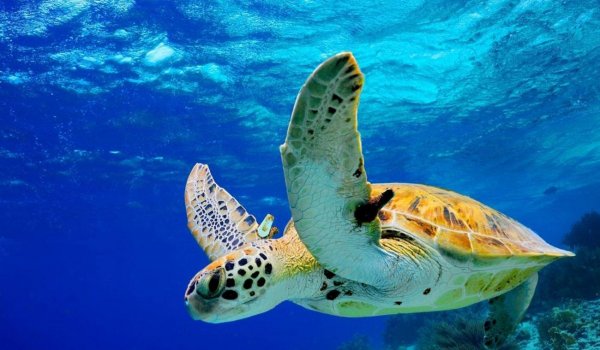
The prawn export industry in Sri Lanka has had a brief but eventful story thus far. It first began in the mid 80’s and has been through some major ups and downs since.
According to the SEASL (Seafood Export Association of Sri Lanka), Sri Lanka currently accounts for less than 0.5% of the global supply of prawns farmed annually. Of the approximately 6000 metric tons of prawns farmed here, only 2000 metric tons are exported. According to the president of the Seafood Exporters’ Association of Sri Lanka, the local prawn export industry brings in an average of $20 million every year, an amount that is, admittedly, quite low. Neighboring countries like India, for instance, generate over $6 billion from prawn exports annually.
The period starting from the late 80’s to the mid 90’s is considered to be the best time for Sri Lanka’s prawn export industry. But in 1996, the industry was hit with the white spot syndrome virus which originated from Thailand. Prior to this, post larvae prawns were being imported into Sri Lanka from Thailand due to a lack of local hatcheries. While the disease can kill a prawn in 24 hours, it does not affect human beings. What it does affect however, is the number of prawns being harvested and sold.
Moreover, the disease is highly contagious, spreading through mediums such as water, air, birds, and crabs, and is especially prevalent among black tiger prawns which happened to be the main species being farmed in Sri Lanka. The most obvious symptom of the disease is the appearance of white spots on the shells of affected prawns.
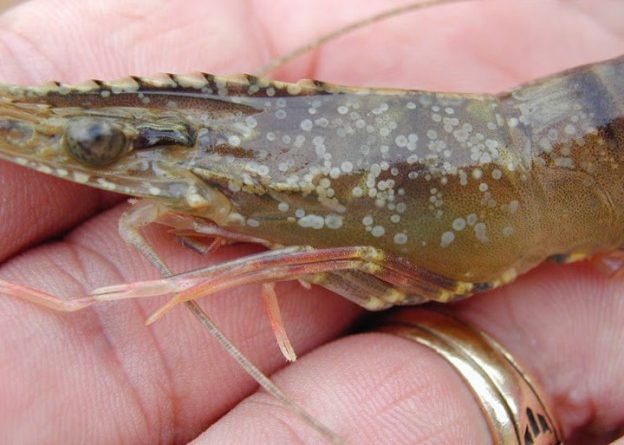
Prawn afflicted with the white spot disease. Image credits: BioAqua.vn
Being a viral infection, no effective cure or treatment has been discovered. In order, to combat the disease, many countries began shifting to harvesting a new species called whiteleg shrimp also known as SPF (Specific Pathogen Free) Vannamei or king prawn. Vannamei was produced through a series of selective breeding designed to develop resistance to the white spot syndrome virus. By and by, many countries began shifting toward this new hybrid species with a developed resistance to the white spot and other diseases known to affect prawns. As a result, they all benefited from a massive increase in the quantity of healthy prawns being harvested.
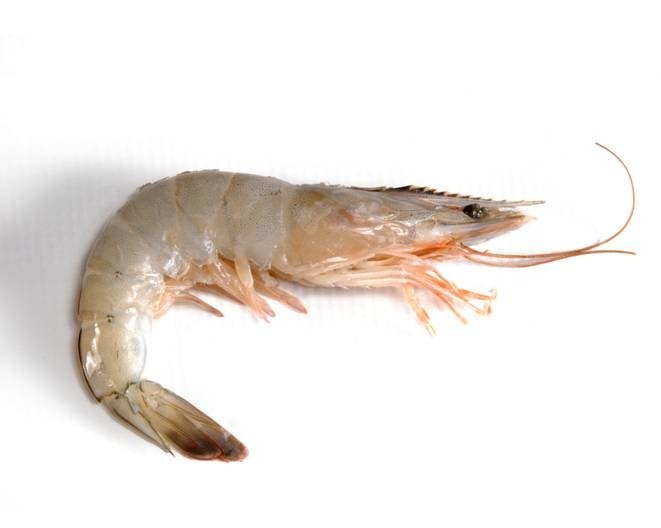
However, it was not merely resistance to disease that contributed to this spike in prawn harvests. The new whiteleg species could also be farmed in much higher concentrations compared to black tiger prawns. To put that into perspective, a single square meter of water can hold only 20 black tiger prawns but up to 500 whiteleg prawns. What’s more, the global demand for black tiger prawns has been in steady decline and now sustains more of a premium market. Sri Lanka, however, is yet to reap the benefits of exporting whiteleg prawns since farming them here is still an ongoing pilot project that is yet to be commercialized.
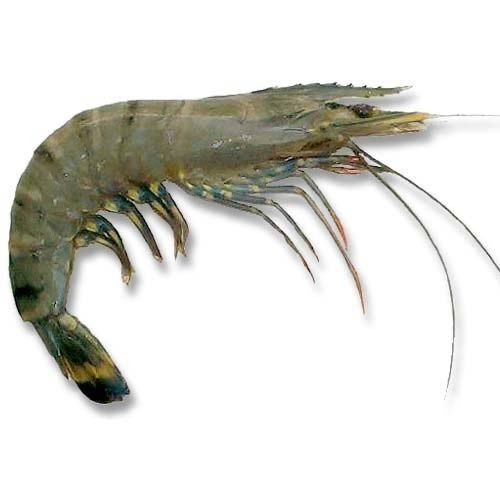
Black tiger prawn. Image courtesy: IndiaMART
The years between 2000 and 2010 represented the toughest time for Sri Lanka’s prawn export industry with the effects of disease further compounded by the lack of an advanced infrastructure to contain it. Experts reckon aquaculture in Sri Lanka is still a few decades behind the rest of the world in terms of development. Hence, there is much to be done. In fact, Sri Lanka is predicted to source nearly 70% of its seafood from various farming methods by around 2030.
Prawn farms in Sri Lanka are located predominantly in the Puttalam and Batticaloa districts, consisting of around 4,500 ponds between them. Much of the labor involved with these farms is unskilled labor such as feeding the prawns and transporting them between ponds. The prawn farmers have to contend with a mortality rate of 20% to 25% per pond due to cannibalism among the prawns during molting and complications with transportation. That said however, not all of the remaining healthy prawns are harvested. The farmers have other problems to contend with.
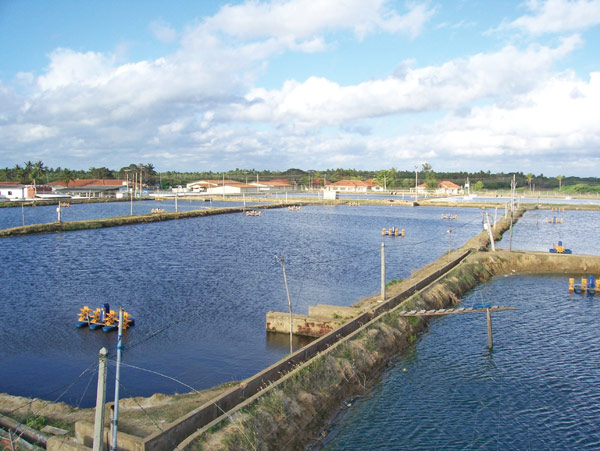
Prawns ponds at Lanka German Aquaculture. Image courtesy: Business Today
One of the other major problems faced by prawn farmers in Sri Lanka is theft. With around 20% to 25% of farmed prawns being lost due to cannibalism and transportation complications, another approximately 50% are stolen leaving the farmers with less than 25% of the full harvest to sell. Hence, it has become standard practice for prawn farmers to hire laborers from outside their local communities such as tea estates in the hill country or even neighboring villages to tend to the farms.
But within Sri Lanka at least, a few restaurant chains are an ongoing source of business to the prawn export industry. ISSO is one of these restaurants. Famous for serving high quality prawn-based seafood, ISSO lives up to this standard by being incredibly selective and using only export quality prawns. There are a number of reasons why.
First off, prawns in local markets are not sold based on size and are soaked in water to make them appear larger than they would turn out after being cooked. Moreover, these prawns are usually the rejects of big seafood export companies.
Hence, ISSO purchases their prawns directly from an exporter. This way, they are able to select prawns according to 4 specific sizes. ISSO only uses the giant tiger prawn (Panaeus Mondon) which can grow to over 30 cm long and weigh up to 11oz. Once selected, the prawns are deshelled and frozen under -18C to maintain freshness and prevent cross contamination before they are cooked. Hence, ISSO is able to serve up some of the most intricate and delicious prawn dishes in Sri Lanka and help keep the prawn export industry alive.
But the ongoing development of modern farming methods and enhanced security measures have the potential to elevate Sri Lanka’s prawn export industry to new heights. If successful, they are estimated to generate as much as $1 billion annually and list among the major contributors to the nation’s economy.
.jpg?w=600)

